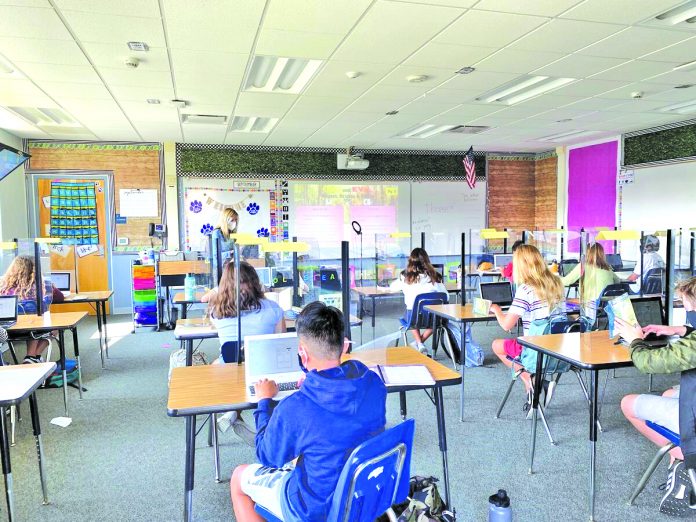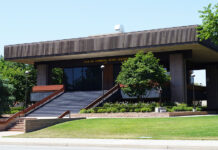In a virtual appearance before the Los Alamitos Chamber of Commerce Thursday, Los Alamitos Unified District Superintendent Dr. Andrew Pulver presented an inside look at what staff and students have faced since the pandemic began.
Nesi Stewart, Chairwoman of the Chamber, thanked Pulver for “breaking away from your hectic activities to join their November virtual networking breakfast.”
Pulver said he has been in a whirlwind of activity since schools were originally closed March 13.
“Like most of you, I thought then it would be a two or three week closure,” said Pulver. So much has happened since then, Pulver told the Chamber members, that he did not want to focus on the spring and picked up the story in May.
“By the end of May through early August, we spent the summer working with a large group of teachers collaborating on how we would reopen our schools,” said Pulver.
Changing guidance from the state made difficult the safe navigation of the pandemic safety terrain, said Pulver, but he credited the work of staff and the 72 stakeholders with creating a “fluid document” that has thus far created a very successful reopening.
Changing conditions do require frequent changes in the plan. “We do update the document regularly,” he said.
When parents were given a choice to have their students return to school or make a year-long commitment to distance learning, 77 percent of families chose to return, while 23 percent of families chose to remain at home to be educated.
Perhaps the biggest challenge of all during COVID, said Pulver to the Chamber, was “trying to find two different pathways for students all within the same amount of staffing allocations that we have.”
Pulver said the district received about $4 million in federal emergency funding, but he outlined how that money had to be spent, “and then some” to safely reopen the schools.
During the discussion, Pulver explained to Chamber members the difficult task of not only creating a reopening and safety plan but implementing it once it was approved.
He thanked Stewart and her printing company for working under duress to create many of the new placards that allow students to traverse marked up hallways that allow them to move only one way.
The new traffic patterns permit social distancing while switching classrooms. Markings had to be made on the floors for proper distancing, students temperature had to be taken, etc.
“I know all of you as businesses have had to make radical changes to how you operate,” said the superintendent, and it was the same for the school system.
To keep students safe, Pulver explained safety procedures and testing protocols.
Also, he explained the procedures for closing schools, especially now that Orange County has slipped back into the so-called “Purple Tier,” meaning the infection rate has notched up a bit.
The state’s reopening blueprint allows schools that are already open to remain open, even if the county itself falls into a more restrictive category.
Therefore, he said Orange County would not have any direct impact on the LAUSD’s current situation.
Only if three schools (or more than 25% of schools within the district) showed a 5% testing positivity rate would schools be forced to close, said Pulver.
To the contrary, said Pulver, Los Alamitos Unified “seems to be emerging as a model for other districts around the state,” listing the many systems from northern and southern California using the Los Al plan as a model.
He thanked the LAUSD Board of Education for their support, welcomed two new board members, Chris Forehan and Scott Fayette, both of whom attended the meeting.
Pulver also credited parents for their sacrifices and hard work to make kids ready for the special circumstances. Even now, he reminded the Chamber members, Los Al schools were only in hybrid mode, meaning that students are on campus, but only certain days per week.
But, he said, that could change early next year, at least in elementary grades. Pulver said LAUSD is currently studying ways to bring back regular elementary school classes but admitted such a plan “is still aspirational at this point.”












